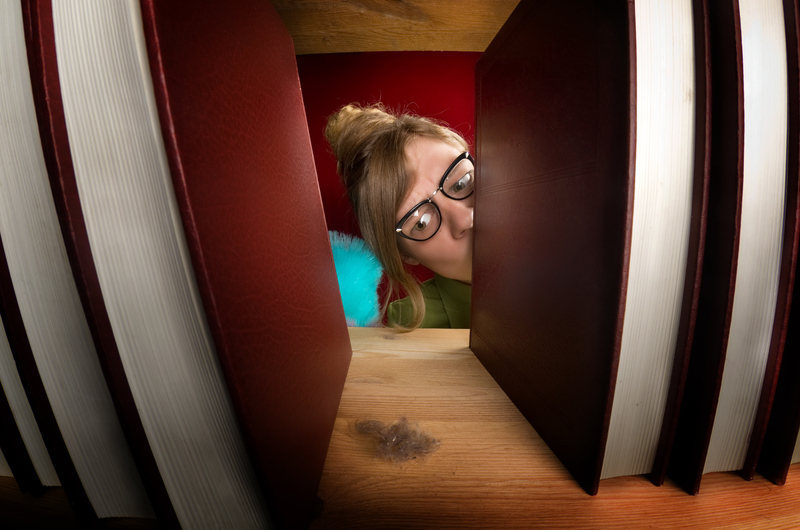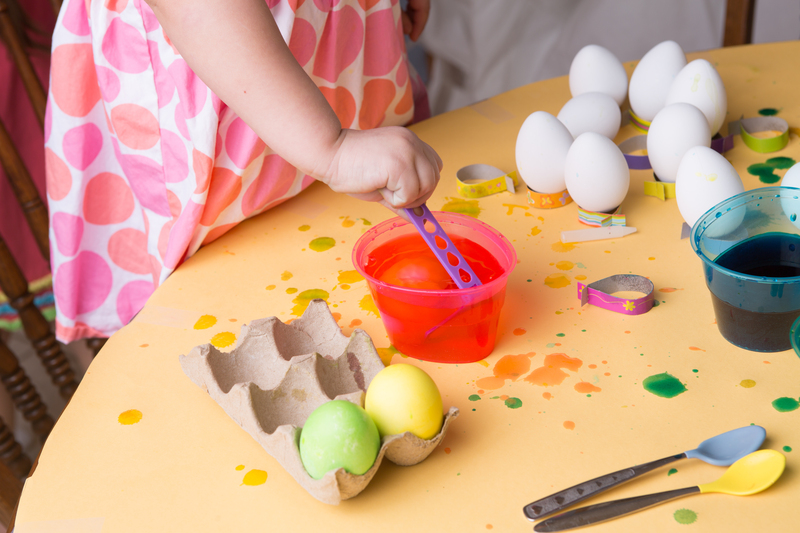Achieve Spotless Window Sills by Removing Mould
Posted on 03/07/2025
Achieve Spotless Window Sills by Removing Mould: The Comprehensive Guide
Mould growth on window sills is a common yet frustrating problem for many homeowners. Not only does it detract from the aesthetics of your living space, but it can also pose health risks and damage property if left untreated. Achieving spotless window sills by removing mould is not only possible but can be straightforward with the right approach. This in-depth guide covers everything you need to know about eliminating mould from window sills, preventing its return, and maintaining a pristine home environment.

Understanding Mould on Window Sills
What Causes Mould to Grow on Window Sills?
Before you start to remove mould from window sills, it's essential to understand why it appears in the first place. Mould typically thrives in damp and poorly ventilated areas. Window sills are particularly prone to this issue for several reasons:
- Condensation: Windows often accumulate moisture due to temperature differences between indoors and outdoors.
- Poor Air Circulation: Closed-off or rarely opened spaces trap humidity, encouraging mould growth.
- Leaky Windows: Faulty window sealing allows water seepage, creating a wet environment ideal for mould.
- Neglected Cleaning: Dust and organic debris provide a food source for mould spores.
Risks Associated with Mouldy Window Sills
Mould on your window sills is more than a cosmetic issue. Here's why you should act quickly to achieve spotlessly clean window sills:
- Health Hazards: Exposure to mould spores can irritate the eyes, skin, and throat, and may trigger asthma and allergies.
- Structural Damage: Over time, mould can weaken wood, paint, and caulking, requiring expensive repairs.
- Unpleasant Odors: Mould produces a musty smell that permeates your home, making it less inviting.
Step-by-Step Process to Remove Mould from Window Sills
Preparation: Gather Your Supplies
- Protective gear: Rubber gloves, goggles, and a face mask
- Cleaning solution: Commercial mould remover or a homemade blend (see below)
- Scrubbing tools: Old toothbrush, small scrub brush, or sponge
- Spray bottle
- Microfiber cloths
- Bowl of warm water
Safety Note: Always work in a well-ventilated space and avoid disturbing dry mould, which can release spores.
DIY Mould Removal Solutions for Window Sills
If you prefer natural approaches, several household ingredients work effectively for cleaning mould from window sills:
- White Vinegar: Kills 82% of mould species and is safe for most surfaces.
- Baking Soda: Deodorizes and scrubs away residues.
- Hydrogen Peroxide (3%): Disinfects and removes mould stains.
- Lemon Juice: Natural antibacterial properties and fresh scent.
- Tea Tree Oil: Powerful anti-fungal properties (mix a few drops with water in a spray bottle).
1. Protect Yourself and Prepare the Area
Put on your protective equipment. Open windows to ensure good air flow and lay old towels or newspaper below the sill to catch drips or debris.
2. Remove Surface Debris
Wipe away dust, dirt, and loose mould spores with a damp cloth. Dispose of the cloth immediately after use to avoid spreading spores.
3. Apply Your Chosen Mould Cleaning Solution
- Vinegar Solution: Pour undiluted white vinegar into a spray bottle, spray generously onto the mouldy area, and let it sit for 1 hour.
- Baking Soda Paste: Mix baking soda with water to form a paste, apply to mould spots, and leave for 15-20 minutes.
- Hydrogen Peroxide: Spray 3% hydrogen peroxide on the affected area, allow it to penetrate for 10 minutes.
- Commercial Cleaners: Always follow label instructions for application and safety.
4. Scrub the Window Sill Thoroughly
Use a scrub brush, old toothbrush, or abrasive sponge to scrub away mould. Be gentle yet firm to protect wood or paint from damage.
5. Rinse and Dry Completely
- Wipe the sill's surface with a clean, damp microfiber cloth to remove all residue.
- Follow up with a dry cloth to eliminate any lingering moisture (— a critical step to prevent mould regrowth on your window sills).
6. Repeat if Necessary
Stubborn stains or embedded mould may require repeated treatments. Be persistent yet patient for the best results.
Special Considerations for Different Window Sill Materials
Cleaning Mould from Wooden Window Sills
Wood is porous and absorbs moisture, making it a prime target for mould:
- Use minimal water during cleaning to avoid deeper absorption.
- After cleaning, allow the wood to dry thoroughly. Consider using a fan or dehumidifier.
- If stains remain, lightly sand the surface and refinish if needed.
Removing Mould from Vinyl and Plastic Window Sills
- These materials are less absorbent; use stronger cleaning solutions if needed.
- Avoid abrasive tools that could scratch the surface.
How to Clean Mould off Painted Window Sills
- Be cautious; harsh chemicals may damage paint.
- Spot test your cleaning solution in an inconspicuous area first.
Prevent Mould from Returning to Your Window Sills
Control Moisture and Boost Ventilation
Prevention is the best way to achieve consistently spotless window sills free of mould. Here are proven strategies:
- Address Condensation: Wipe down windows and sills daily in humid months.
- Use a Dehumidifier: Keep indoor humidity below 60% (ideally 30-50%).
- Open Windows: Regularly allow air to circulate, especially in kitchens and bathrooms.
- Fix Leaks Promptly: Repair faulty seals or caulking around frames.
- Install Trickle Vents: These help maintain airflow without fully opening windows.
Regular Cleaning and Maintenance
- Dust and wipe down window sills weekly to remove food sources for mould.
- Use mould-inhibiting sprays or agents as part of your routine.
Upgrade to Mould-Resistant Materials
- Consider replacing old, damaged wood with treated wood, vinyl, or composite materials.
- Repaint sills with mould-resistant paint for extra protection.
When to Call a Professional for Window Sill Mould Removal
While most cases of mould on window sills can be addressed with household products, some situations require expert attention:
- If the mould covers an area larger than one square meter.
- You suspect toxic black mould (Stachybotrys chartarum), which demands specialist containment.
- Mould returns rapidly after repeated cleaning, indicating underlying water intrusion or ventilation problems.
- You or family members experience persistent health symptoms related to mould exposure.

Frequently Asked Questions about Mould Removal from Window Sills
Is bleach safe for removing mould from window sills?
Bleach is effective on non-porous surfaces (like plastic or glass) but is less effective on porous materials like wood, as it cannot penetrate deeply. Overuse can also damage paint and finishes. Consider using vinegar or hydrogen peroxide as safer alternatives.
How often should I clean my window sills to prevent mould?
Routine cleaning is vital. Wipe down your window sills weekly (or more often in humid conditions) to remove dust and moisture, minimizing conditions for future mould growth on window sills.
Can mould on window sills spread to other areas?
Yes. Mould on one window sill can release airborne spores that colonize other damp areas of the home. That's why timely removal and prevention are so important.
What should I do if mould keeps coming back?
Persistent mould usually signals an underlying moisture problem. Inspect for leaks, check insulation, and consider consulting a mould remediation specialist.
The Bottom Line: Achieving & Maintaining Spotless Mould-Free Window Sills
In summary, achieving spotless window sills by removing mould is a mix of effective cleaning, preventative maintenance, and creating a dry, well-ventilated environment. The key steps include:
- Identifying and treating the root cause of mould growth on your window sills
- Using safe and effective cleaning solutions tailored to your type of window sill
- Practicing diligent aftercare and regular cleaning to prevent a recurrence
By following these comprehensive steps, not only can you restore the beauty and cleanliness of your window sills, but you'll also improve your home's air quality and overall health. Whether you're scrubbing away a few spots or battling stubborn stains, these simple yet powerful techniques empower you to keep your home sparkling fresh and free from mould.
Ready to achieve spotless window sills? Start your cleaning regimen today and enjoy the peace of mind that comes with a healthy, beautiful home.




